M57
- The Ring Nebula - New experiences with getting a
photograph
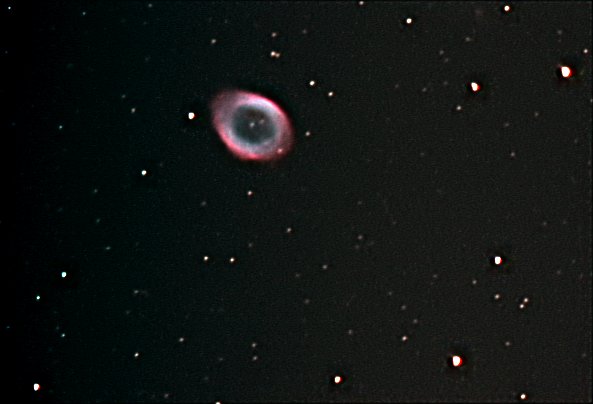 |
Date, time: 2.10.2002 (20:00 - 21:36 UT)
Resolution: 0.96 arcsec/pixel
Camera: Vesta 675 SC2
Telescope: 8" F6 Orion Europa Newtonian
Result focal ratio: F6
Exposure: 129x30s (gain 100%, Amp OFF, outdoor
white balance), 16xDF
Captured and processed by K3CCDTools, then in
Maxim DL Demo and IRIS.
Seeing: very soft haze, lim.magnitude for naked
eye 4.2, temperature 10°C |
There are several key factors, which helped me to
achieve better photos during 1 year:.
A. Enhanced
equipment
In comparison to my first
imaging of M57, I used enhanced equipment:
1, Peltier cooled camera
For imaging I used Vesta 675 SC2
webcam modified according to Steve
Chambers with Peltier cooling system.
In 30s exposure, 100% gain and ambient temperature 10°C
there were virtually no hot pixels:
You can compare it to dark frame of 5s, 75%
gain exposure with not cooled system.
2, Homemade autoguiding
system
Long exposures require good and stable mount. As my
GEM1 mount is only relatively cheap entry level mount, it
has a big periodic
error. I build my own auto guiding system,
which guarantees me periodic error maximum +/-5arcsec (standard
deviation 1.6arcsec).
The efficiency of autoguiding shows the following graph:

B. Frames
aligning
Better aligning algorithm in K3CCDTools
allows to use stronger histogram stretching. When
histogram is heavily stretched, then also small artifacts
in image are visible. Well known is problem of strips:
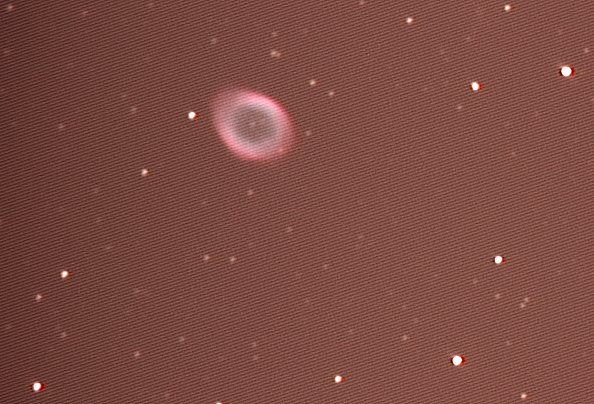
This is a summed image of 129 frames aligned by
using FFT correlation method. |
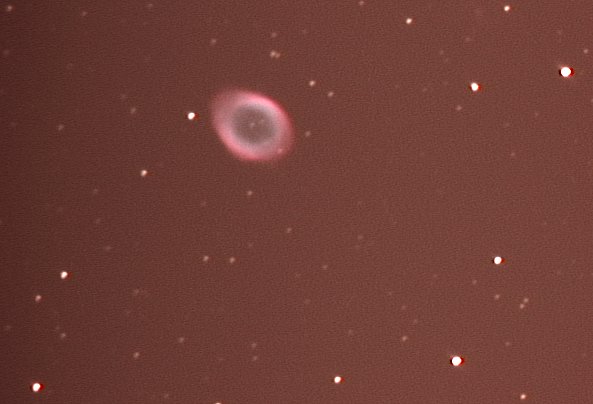
This is a summed image of 129 frames aligned by
using automatic FFT correlation and then fine
aligned by Difference Alignment.
What a difference!
The trick is using a small Radius
(2 pixels) and Threshold higher
than background level. In that case soft strip
pattern (usually not visible by eye in raw frames)
in background has no effect for aligning and
frames are aligned only according to bright
objects (stars).It is interestig, that
analysis of difference between these 2 mentioned
methods showed, that alignment differents were
not higher than 1 pixel!
|
C. Post-processing
results
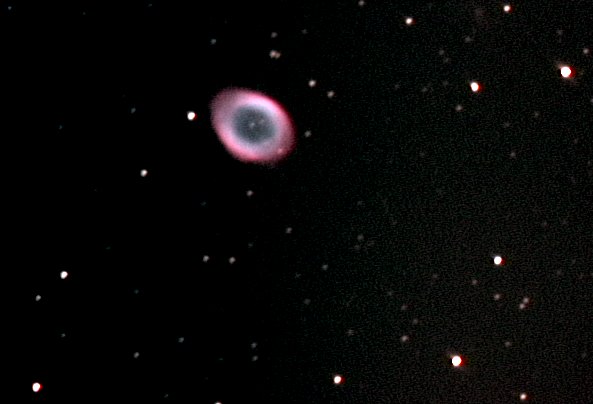
Processing details:
1, aligned and summed in K3CCDTools
2, histogram stretching in K3CCDTools
3, unsharp mask 1, 0, 50The result image was
produced only by using K3CCDTools without need of
any other software package.
|

Processing details:
1, aligned and summed in K3CCDTools, then
exported to FIT
2, histogram stretching in Maxim DL Demo
3, cutted red channel's low end of histogram (light
pollution) in Corel PhotoPaint
4, adaptive unsharp mask (66%) in Corel
PhotoPaintStars are not perfectly rounded,
because of not perfect seeing and not perfect
mount. Unsharp masking helped to enhance the
image, but stronger unsharp mask causes higher
noise in image.
|
 I started to think of
using some image deconvolution. I started to think of
using some image deconvolution.
This image was processed by Maximum Entropy
Wizard in Maxim DL Demo.
Processing details (the input was the above image):
1, Maximum Entropy for each R-G-B channel in
Maxim DL Demo
2, Unsharp mask 2,0,100 in Corel PhotoPaint
3, Unsharp mask 1,0,100 in Corel PhotoPaint
Maximum Entropy Wizard enhanced some details in
nebula, but two 15.0 mag stars above nebula are
not as distinguishable like in above image. |

Processing details:
1, aligned and summed in K3CCDTools, then
exported to FIT
2, histogram stretching in Maxim DL Demo
3, low end histogram cut for R channel in IRIS
4, Richardson-Lucy deconvolution for each R-G-B
channel in IRIS
5, combining R-G-B plates into TrueColor bitmap
in IRISThis is my final version of processing.
Richardson-Lucy deconvolution algorithm in IRIS
did a great job. It enhanced nice details in
nebula area.
|
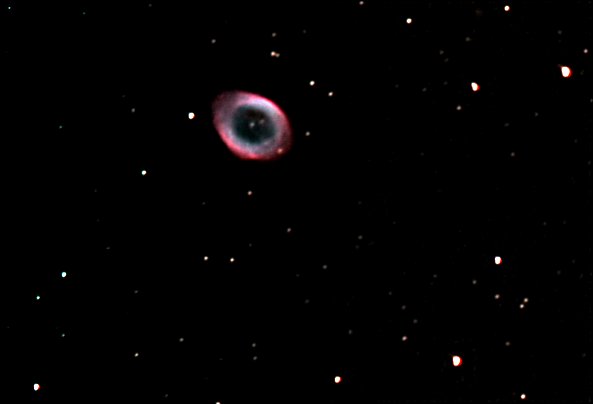 This is a special
version of above image for laptops screens - they
tend to enhance dim parts (LCD screens seems to
have higher gamma than standard cathode ray tube
monitors).
The low end of histogram was cut.
|
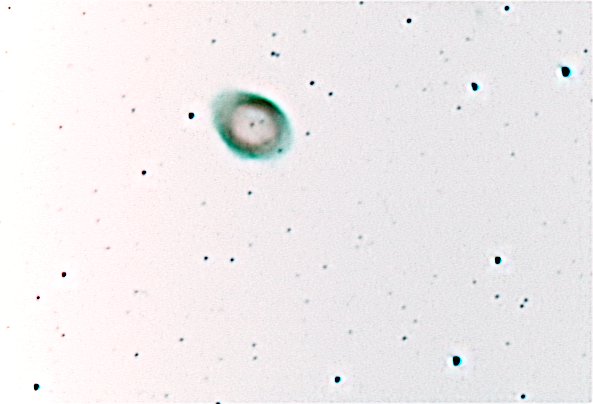
Negative of IRIS version - better for finding dim
objects. |

This is a special processing (histogram
stretching) for enhancing dark details.
IC1296 is a spiral galaxy. |
Back to M57
Computer generated images,
real images, drawings and texts are property of the
author and may not be reproduced or used without
permission of author.

Last Update: 3.10.2002
|